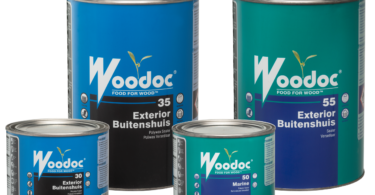It may seem like a messy chore, but there are clever ways to clear those fallen leaves and some eco-friendly uses for them too…
Timing – Don’t wait until every leaf has hit the ground and you have a thick pile lying in your garden. Your lawn still needs to see the sun and a thick blanket of leaves can suffocate your grass and make it turn yellow if left for too long. Clean up at least once a week.
Raking – There are ways to make raking less of a pain. One is to get a bigger rake, as wider rakes cut down on raking time. Other features to look for include a large handle with a slip-resistant or foam-cushioned grip; an ergonomic design with a bent handle that’s easier on your back; and teeth or tines that keep leaves from sticking or being impaled (this will save you having to stop and bend over every five minutes to remove clogged leaves at the end of the rake). Take regular breaks while you work and don’t forget to stretch. Switch hands to avoid stiff arms and work with the rake, moving in a straight line as you walk backwards, without twisting your upper body. Another good idea is to rope in the kids with the promise of extra pocket money. Rake leaves onto a tarp before bagging them or simply drag them to the compost heap or flowerbeds that need mulching.
Mowing – The best way to use autumn leaves is to chop them up first. Just run the lawnmower over them and let them stay on the lawn as instant fertiliser for your grass, returning nutrients and organic matter to the soil. You may have to go over the leaves several times to get them chopped up into small pieces, but it’s faster than raking and bagging (or rake once if it’s a really thick pile and then mow over the rest). Set the cutting level to one of the higher settings so that the mower can pick up the leaves and shred them easily. Collect the shredded leaves in a bag to use in other places if you don’t want it all left on the grass. The best time to mow leaves is when they are damp, but not too wet. That way they won’t fly around as much when you go over them.
Blowing – A leaf blower-vacuum is perfect for getting to leaves that are stuck around shrubs, inside flowerbeds and other hard-to-rake (or mow) areas. Do your homework before you fork out for one though, as the smaller ones aren’t all that powerful and will at most clear the driveway and pavement or suck leaves out of corners. If your aim is to blow leaves into great big piles, then you need to look for the kind that landscapers use – they are bigger and more powerful, albeit heavier. Also, be a considerate neighbour and use your leaf blower at a reasonable time, as they are quite noisy (this goes for mowing too). They do a nice job of shredding dry leaves, but don’t waste time trying to use one on wet leaves.
Mulching – Fallen leaves make for an insulating winter mulch, keeping weeds at bay and eventually decomposing and feeding the soil as they break down. You can either turn them into the top few centimetres of soil or simply spread a layer of leaves on top of the soil. Just make sure to shred or chop them first, as a thick layer of wet leaves will form a dense cover that will block water and air from getting through to the soil. While the leaves must be dry before shredding, water them a little after mulching or the wind will carry them all back onto your lawn.
Composting – Did you know that more than half of the nutrients absorbed by leaves during their growing season are still present when they fall in autumn? So once you’ve raked, mowed or blown all your leaves together, consider adding them to you compost pile. They are the perfect ‘brown’ (or carbon) ingredient layered in between all the ‘green’ garden matter you’ve gathered. In fact, combining dry leaves with green garden waste will result in a balanced, actively decomposing pile that will decompose even faster if you shred the leaves first. Even dry leaves piled on their own will eventually decompose into leaf mould, which is a type of compost. Just be sure to turn the pile once a month.
Have you got a tip for using or clearing away fallen leaves? Share it with us…











Leave a Comment